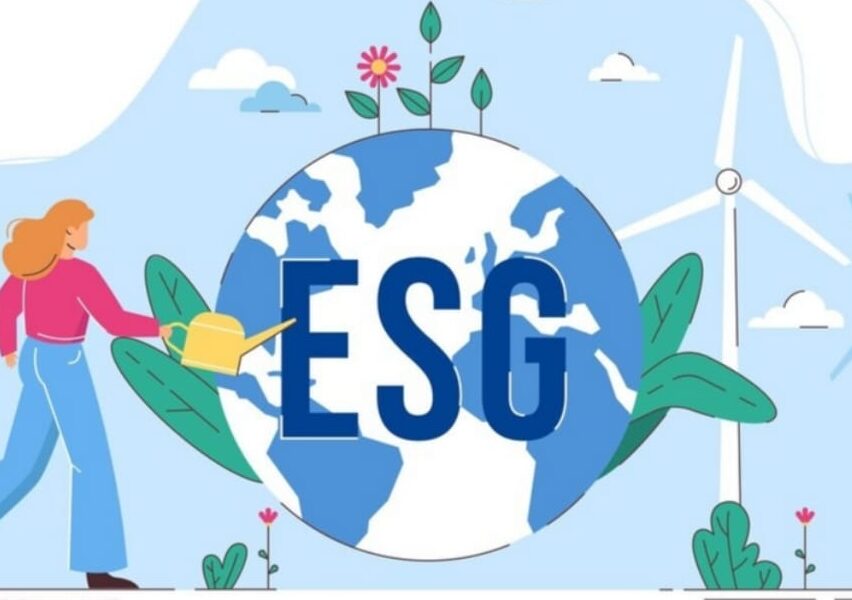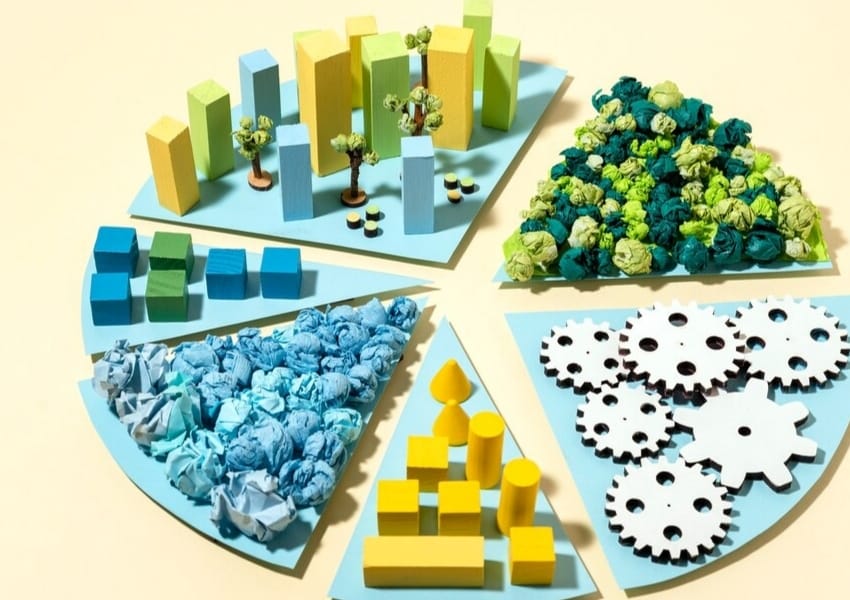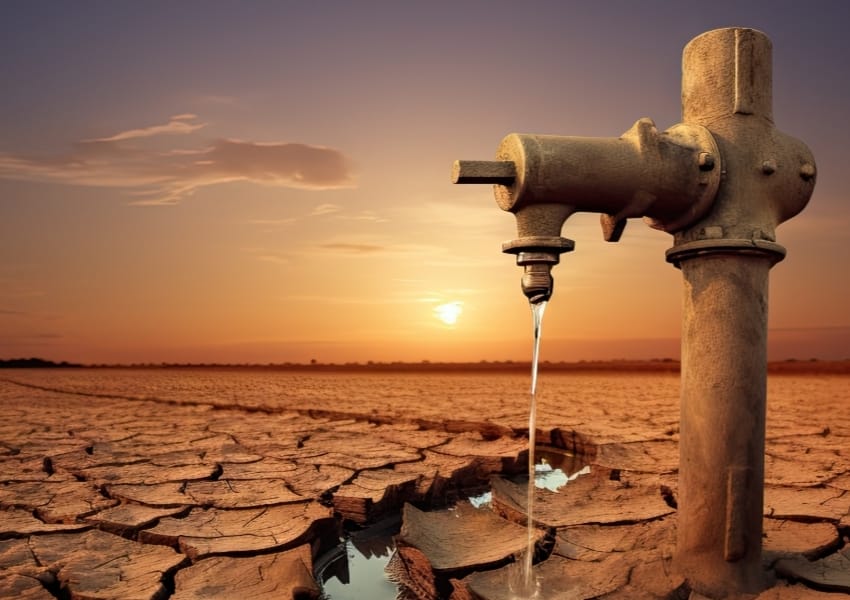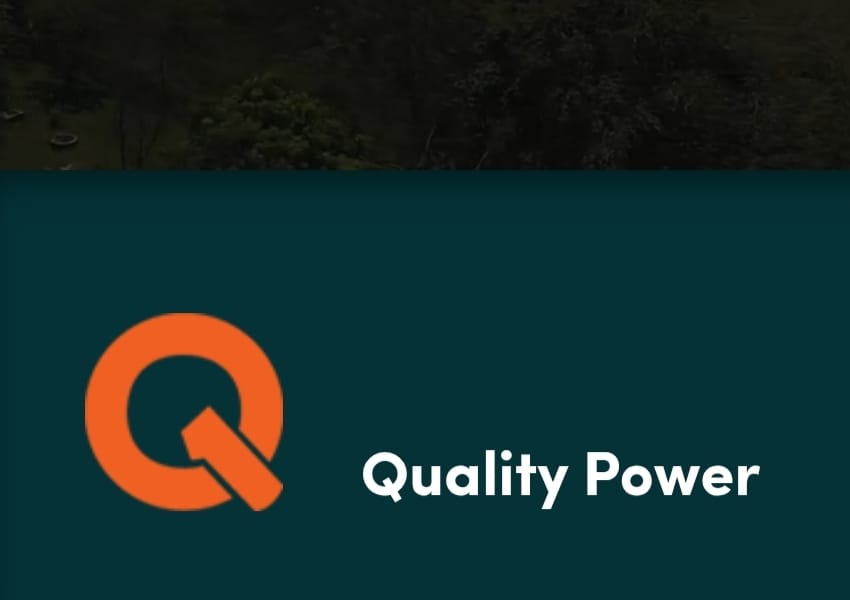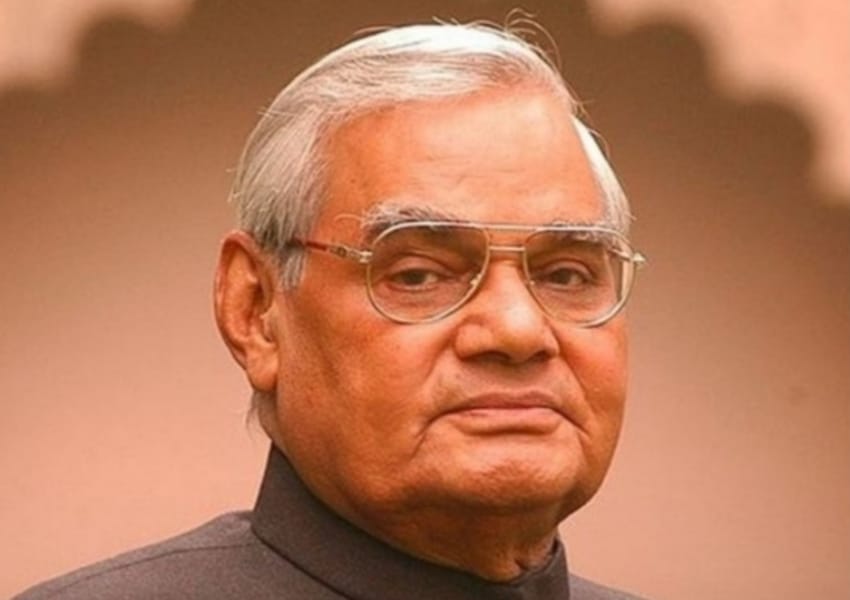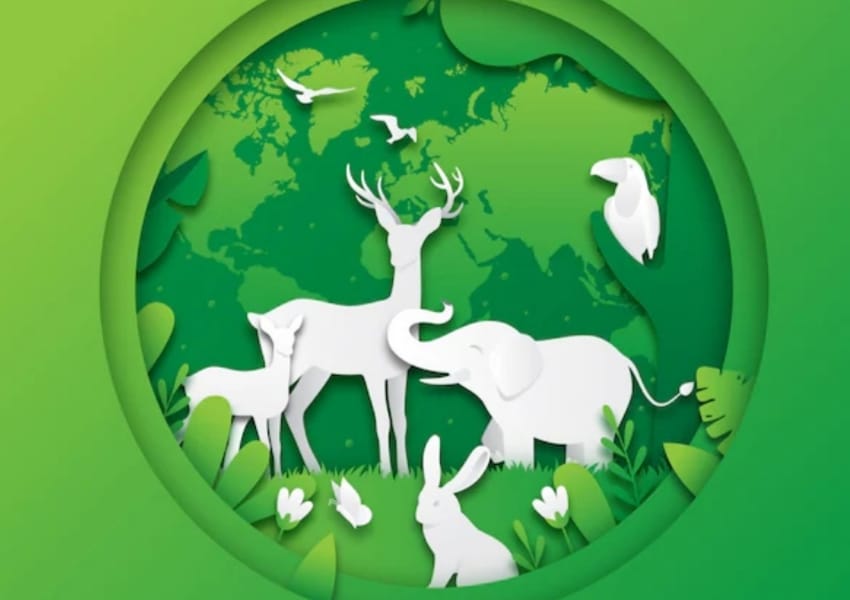Decoding Shift To Sustainable Packaging In India’s Gifting And Shipment Sector
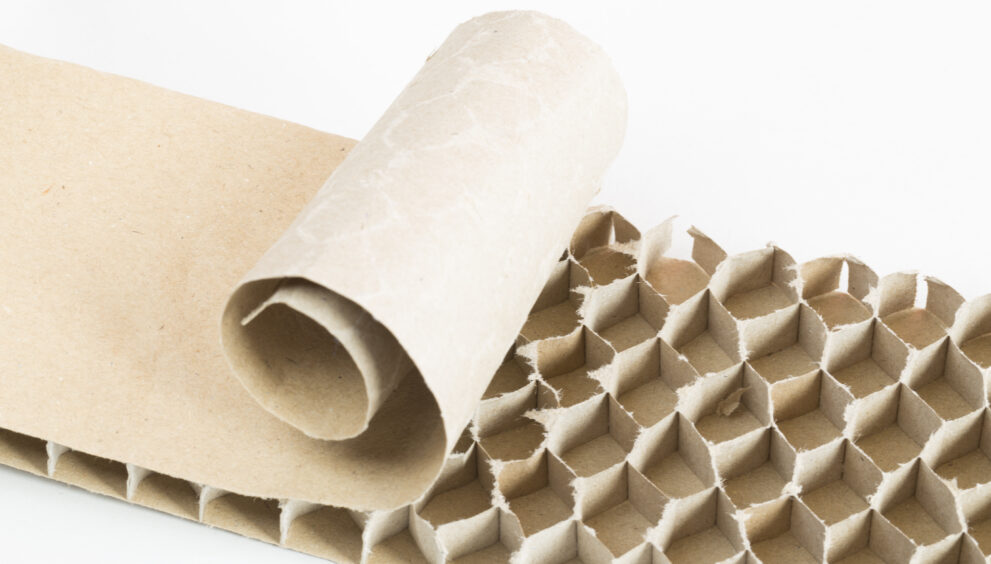
Packing materials obtained from natural elements is the latest organic method adopted by the players in the gifting and shipment industry (containership or other modes of transport) to advance towards a sustainable future. Several companies are switching gears to eliminate toxic chemicals and condense packaging waste to nil.
It’s nothing new to pack products in a box or a wrapper for shipment to its end users. The parcel delivery or courier service is accustomed to such a packaging routine. Even at a brick-and-mortar store, the customer heads to the packing department before the goods are handed out to him/her at the point of sale after payment clearance. Till here, the story sounds familiar. But what if the same procedure takes a turn towards sustainability and conveys an ethical message to all and sundry on responsible shopping?
The packaging industry is undergoing an eco-friendly makeover on a massive scale to curb environmental pollution. It uses biodegradable or decomposable materials like jute bags, cloth/fabric bags, brown paper, bento boxes, compostable, recyclable, corrugated, glassine, cellulose, cornstarch, mushroom, kraft paper, green cell foam and other reachable mediums for delicately packing, folding and placing products in a safe and healthy transportation chain until the last mile delivery is reached.
S Sambhu Prasad, Chairman and Managing Director (CMD), Amrutanjan Healthcare said, “We recognise the vital role that sustainable packaging plays in today’s world. Our decision to switch our iconic brand Amrutanjan Maha Strong Pain Balm to eco-friendly glass packaging marks the initial stride in lessening our environmental footprint.”
Edible Packaging
Brand owners are on the lookout for environmentally friendly packaging solutions to counter the single-use packaging routine and improve their carbon footprint. Edible packaging provides an apt arrangement for recycling, upcycling or disposal, often crucial in the life cycle of packages.
The innovative concept of wholesome edible packaging took the world of the food business by storm a few years ago when edible cutlery like dishes, forks, spoons and chopsticks hit the market. Also, a fruit juice centre created a rage with its unique art of serving citrusy syrups in fruit shells with straws made of banana leaves instead of the usual plastic cups and straws.
Talking about the market stats, a decent segment of the competitive market is now being penetrated by eco-friendly gift wrappers but a considerable portion is still held by plastic boxes, containers and packages.
As per Mordor Intelligence, the India plastic packaging market is segmented by packaging type (rigid plastic and flexible plastic), end-user (food, beverage, healthcare, personal care, household and other end-user types) and products (bottles, cans, jars, pouches, trays, containers, bags, films, wraps, and other product types). The India plastic packaging market size is envisioned at USD 21.77 billion in 2024 and is expected to reach USD 25.35 billion by 2029, witnessing a compound annual growth rate (CAGR) of 3.09 per cent during the forecast period (2024-2029).
According to Market Research Future, India’s rigid plastic packaging market size was valued at USD 8 billion in 2022. The rigid plastic packaging industry is projected to grow from USD 8.8 billion in 2023 to USD 19.01 billion by 2032, anticipating a CAGR of 10.10 per cent during the forecast period (2024-2032). Some of the key market drivers are the rising customer demand for product safety and durability life, the increasing need for sustainable packaging solutions and various breakthroughs in manufacturing technology.
India’s packaging industry has expanded constantly throughout the years, evolving as one of the nation’s predominant economic sectors. The industry is expected to grow 22 to 25 per cent each year, according to the Packaging Industry Association of India (PIAI). Some of the other important sectors that have propelled the nation’s packaging industry’s growth are pharmaceuticals, the food processing sector and fast-moving consumer goods (FMCG).
In recent years, there has been an explosion in the Indian packaging industry due to the emergence of ecommerce. Numerous parcels are delivered across the country daily owing to the upsurge in the traffic on ecommerce platforms, spurring greater demand in the process.
Notably, the soaring need for rigid plastic packaging in the food and beverage industry is aiding growth in the Indian rigid plastic packaging market. Food contamination during storage poses an immense risk. Two basic factors that affect the nutrients in food are temperature and moisture content. By using the right packaging materials, this can be partially avoided and can also prolong the shelf life of the food product.
According to the Market Research Future post, “Companies in the F&B sector have access to a range of suppliers for rigid plastic packaging. Customers can easily open and reseal these containers, thanks to the included film lidding option. Additionally, the side ventilation eases moisture management and cooling, boosting the rigid plastic packaging market revenue.”
Plastic Peril
Reflecting on the percentage of plastic pollution wreaking havoc on our blue planet globally as well as in India, Sachin Sharma, Founder and Director, GEM Enviro Management informed, “Plastics account for approximately 5 to 12 per cent of the world’s total waste generation, constituting 20 to 30 per cent by weight. Shockingly, about 60 per cent of plastics end up in the environment as waste, with plastic pollution causing an estimated 60 to 80 per cent of marine litter worldwide.”
Climate watchers everywhere are wary of the prevalent situation. “India faces a dire situation, ranking among the top five global polluters and inducing around 4 million tonnes of plastic waste per year,” mentioned Sharma.
Several reports revealed that India along with 11 other countries, bears responsibility for 52 per cent of the world’s mismanaged plastic waste. “This alarming scenario poses a significant threat to the country’s water bodies, including rivers and oceans as well as its landfills and urban areas. While specific data on the precise percentage of pollution generated by plastic in India may vary, there is no denying that it enormously adds to the overall pollution burden,” he rings an alarming bell.
Many companies in the food business (F&B) rely on styrofoam and single-use plastics to package their products for delivery. When enquired to what extent this impacts the environment or are these materials non-biodegradable and non-recyclable, Shailesh Singh, Sales Head, Pakka asserted, “While these materials offer functionality, they can create disturbances in the environment. They’re typically non-biodegradable meaning they take a very long time to break down or decompose or may not be dissolved at all by natural organisms/agents like bacteria into harmless products and thus remain in the environment as a source of pollution. As a consequence, such materials may not be readily recyclable in all areas or difficult to be reuse for decades. This can result in landfill overflow causing contamination.”
Tejashree Joshi, Head of Environmental Sustainability, Godrej and Boyce told BW Sustainabilityworld, “In our company, sustainability is at the heart of our primary activities. Our commitment to controlling environmental impact extends across all facets of our operations, right from manufacturing to product disposal.” By 2031-32, the company aims to drop hazardous and non-hazardous waste by 25 per cent, while completely banishing the use of EPS (expanded polystyrene) in favour of 100 per cent recyclable plastic packaging.
There is a deepening focus on sustainable packaging across industries. The market research firm IMARC Group’s report stated India’s sustainable packaging industry is expected to see a CAGR of 7.24 per cent between 2023 and 2028.
The company achieved a 99.6 per cent diversion of non-hazardous waste from landfills and a 52 per cent decline in the generation of hazardous waste. It adopted a circular approach for its products and packaging to make sure that most of the used plastic can be recycled. The company now employs multi-ply corrugated board as inserts instead of plastic and also uses polybags of over 50 microns of thickness for recyclability.
“Through comprehensive efforts in sustainable packaging, waste decrease, energy efficiency and green product development, we strive to make a positive impact on the planet and the communities that we cater to,” concluded Joshi.
Recycling Power
Reusing or upcycling is integral to sustainability and manufacturers are walking this talk. After collecting plastic from corporations like Coca-Cola, PepsiCo and Bisleri, GEM Enviro recycles the material with a two-fold purpose — to contribute to the environment as well as the circular economy.
However, treading the path seems a tough task. “In India, despite the presence of recyclers, there remains a notable gap in infrastructure, supply chain and waste management standardization between recyclers and the various industries that generate substantial industrial waste, including e-waste or plastic waste,” complained Sharma.
When asked about the advantages of making merchandise out of plastic created from polyester fiber, a by-product of recycled PET (polyethene terephthalate: a type of resin and a form of polyester) bottles, Sharma mentioned that plastic fashioned out of recycled PET bottles offers several benefits. “First, it lessens environmental impact by repurposing waste material, thereby encouraging sustainability. Second, it minimises the need for virgin plastic production, and contributes to waste reduction and resource conservation,” he summed up.
Some of the products made from recycled plastic include polyester fibre clothing, reusable bags and outdoor furniture. These items provide consumers with eco-friendly alternatives without compromising on quality or endurance, thus further enhancing their appeal and contributing to a greener future in turn.
One wonders if recycled plastic (made from polyester fibre) is biodegradable and does this adds to sustainable finance and supplements the country’s GDP. “Recycled plastic is typically non-biodegradable due to the nature of polyester, a synthetic polymer,” clarified Sharma and added, “However, recycling plastic lowers heavy reliance on newly-manufactured and unprocessed virgin plastic production, curbing energy consumption as well as greenhouse gas emissions. This supplements sustainable finance by promoting resource efficiency and green economy.”
Hurdles To Tide Over
There is a slew of challenges usually faced in the recycling process of plastic in terms of logistics, costs and getting government grants. It often encounters various obstacles, including logistical hurdles such as littering and segregation at the source, which complicate collection efforts and skyrocket costs. This apart, from the lack of proper infrastructure for subsequent waste management further hampers the recycling process.
Limited availability of quality material causes another hindrance, affecting the efficiency of recycling operations and the quality of recycled products. Moreover, there’s a frequent gap between the demand for recycled plastic and its supply, upsetting market viability and investment in recycling initiatives.
Furthermore, securing government incentives to support recycling initiatives can be difficult due to bureaucratic processes or red tape and the competing priority agenda. “Addressing these issues requires concerted efforts from stakeholders across sectors to play a pivotal role in upgrading the recycling infrastructure, streamlining its processes and drawing funds for sustainable practices,” opined Sharma.
In the quest for sustainable packaging solutions in India, various materials show promise and can work best to serve packaging purposes in India. While paper, wood, agricultural waste and certain plants have emerged as alternatives to single-use plastics (disposable plastics are used only once before being rejected or recycled. Plastic containers, straws, coffee stirrers, soft drink and water bottles, and the majority of food packaging are fashioned out of single-use plastic), more clean alternatives are needed to address the diverse packaging needs in the country, feel packaging experts. Metal cans like aluminium, tin cans, paper and paperboard-based materials can come in handy as eco-friendly choices.
“Traditional materials like trees and food crops spark difficulties due to land constraints and a clash with sufficient food production. Additionally, numerous disposable plastic items, such as packets for dairy and FMCG products, plastic bottles, food delivery containers and e-commerce packaging require viable solutions to diminish the environmental impact. Innovative biotech startups are exploring seaweed-based bioplastics offering compostable, marine-safe and low-carbon packaging options. Seaweed cultivation needs limited resources compared to food crops, thus making it a sustainable choice if harvested responsibly. These substitutes raise hopes for revolutionising packaging practices in India and dwindling excessive dependence on single-use plastics,” elaborated Sharma.
Pakka manufactures compostable packaging material for food service, carry and wrap as well as flexible packaging. These offer a level of usability similar to traditional options but with an edge, as they break down much faster, dipping its environmental footprint.
“To achieve zero waste through sustainable packaging solutions, we use PLA (polylactic acid), a plant-based material, to wrap our products for shipment. Moreover, we procure our raw materials — specifically bagasse — from sugar mills within a 200-kilometre radius of our manufacturing facility in Ayodhya. This significantly trims our carbon footprint associated with transportation,” stated Singh who appends ahead that “compostable packaging helps cut down the downstream emissions of our customers.”
Green Activities
Sustainable packagers intend to build awareness of sustainability and circular economy among commoners. Can this be achieved by hosting live interactive demonstration programmes among consumers on plastic collection and cleaning drives or conducting corporate seminars to alert companies in the packaging industry?
To this end, companies employ various strategies to engage communities at large. “Firstly, we organise communicative programmes for consumers focusing on plastic accumulation and cleaning drives and fostering hands-on engagement and education. These events provide an opportunity for individuals to actively participate in environmental initiatives while learning about the importance of waste management and recycling. In addition, we run corporate seminars to manifest the significance of sustainable activities amid companies in the packaging industry,” apprised Sharma.
These seminars emphasise the benefits of adopting circular economy principles and offer practical guidance on implementing eco-friendly packaging methods. For the uninitiated, GEM Enviro delivers comprehensive plastic waste management solutions to reputed organisations like Mamaearth, Varun Beverages etc., encompassing various initiatives tailored to their specific needs.
Accounting for the plastic waste management steps offered to various houses, Sharma briefs: “Our Extended Producer Responsibility (EPR) services ensure that organisations take responsibility for the entire lifecycle of their products, including proper disposal and recycling of plastic waste. Through efficient plastic waste management strategies, we offset the environmental impact and optimise resource efficiency, helping conglomerates attain their sustainability goals,” stated Sharma.
Compostable Packaging
“In the context of flexible and home compostable packaging applications in the food industry, both not only slash the call of the hour — challenges faced due to the environmental impact — by breaking down to get rid of the packaging waste but also attract consumers who are well aware of their environmentally-compatible choices and are actively seeking sustainable products. These materials can decompose in controlled composting facilities within 180 days,” reports Singh.
For the unversed, conventional packaging hinges heavily on non-renewable resources whereas compostable packaging material is made from bio-based mediums like sugarcane residue, corn, cellulose, etc. A study by NielsenIQ revealed that above 80 per cent of global consumers are willing to pay more for sustainable products. “This means compostable packaging not only ensures a commitment towards sustainability but also lures a wider customer base, enriching the corporate brand image,” added Singh.


